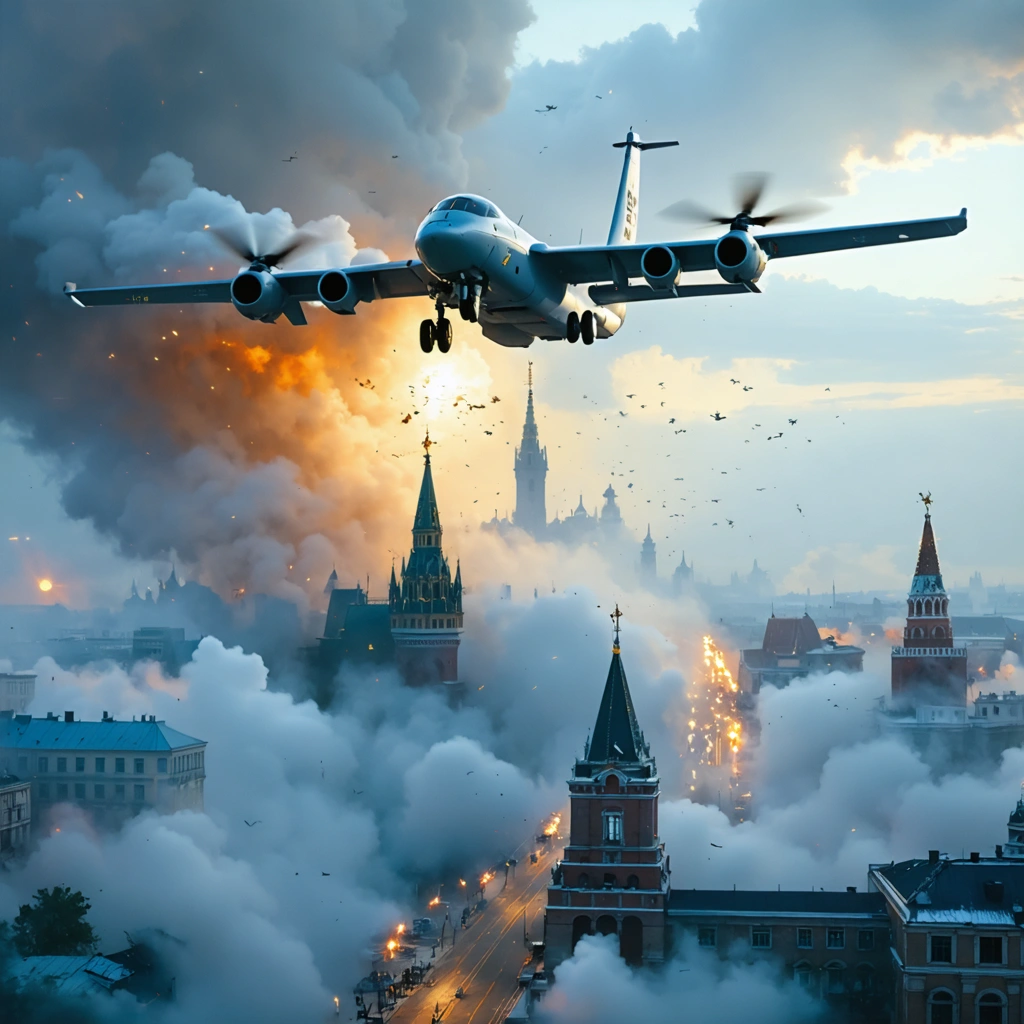
Introduction: A Pivotal Moment in Modern Warfare
The recent large-scale drone attack on Moscow by Ukrainian forces marks a turning point in modern strategic operations. This unprecedented assault, described by officials as the most significant on Russia’s capital since the war began, highlights not only Ukraine’s growing military capabilities but also the evolution of asymmetric warfare. As global markets watch the developments, the incident reveals broader implications for geopolitical stability, defense strategies, and the interconnected world of business and technology.
Strategic and Political Implications
Overview of the Attack
In what has been defined as a precise and powerful demonstration of aerial capability, Ukraine’s decision to target Moscow reflects a strategic recalibration. Key elements of the operation include:
- Utilization of advanced drone technology to overcome traditional air defenses.
- A coordinated and sustained effort aimed at undermining the morale of enemy leadership.
- An implicit message to international actors about the shifting balance of power in the region.
This approach has reinvigorated debates in military and business circles alike, emphasizing that modern conflicts are increasingly defined by rapidly evolving technology rather than solely by conventional warfare tactics.
Political Ramifications
The significance of targeting a major capital city resonates beyond immediate tactical gains. The political implications are extensive:
- Escalation of International Tensions: The attack has potential repercussions on international diplomacy, with global powers reassessing their stance towards the conflict.
- Reevaluation of Defense Postures: Many nations are prompted to revisit their air defense investments and strategic alliances in light of demonstrated vulnerabilities.
- Impact on Negotiations: With the president of Ukraine proposing an air truce amidst high-stakes maneuvers, the duality of aggressive action combined with negotiation could reshape future peace talks.
Impact on Business and Technology Sectors
Growth in Drone Technology
The attack serves as a case study in the rapid deployment and operational effectiveness of unmanned aerial vehicles (UAVs) in modern conflict. For industries operating in the defense technology sector, several key insights have emerged:
- R&D Investments: There is an accelerated push towards research and development related to advanced drone technologies, including improved navigational systems, target recognition algorithms, and counter-electronic warfare measures.
- Market Expansion: Defense contractors and technology firms are witnessing increased interest from governments and private entities worldwide, leading to potential market expansion for both commercial and military applications.
- Public-Private Partnerships: Collaborative efforts between public entities and private companies are becoming essential. These partnerships are paving the way for rapid prototyping and field testing of next-generation drone systems.
Economic Opportunities and Challenges
The intersection of military operations and business strategy is particularly evident in the aftermath of the drone assault. The incident has prompted multiple stakeholders to convey cautious optimism about the resulting economic shifts:
| Sector | Opportunity | Challenge |
|---|---|---|
| Defense Industry | Increased demand for advanced UAVs and counter-drone solutions | Need for rapid innovation under conditions of high scrutiny |
| Technology & Innovation | Acceleration of R&D investments globally | Geopolitical risk affecting cross-border collaborations |
| International Trade | New export markets for advanced defense technologies | Stricter regulation and export control compliances |
These dynamics indicate that while the immediate operational success of the attack is clear, the ripple effects span across economic sectors and influence long-term business strategies. Companies must weigh the balance between seizing market opportunities and managing the inherent risks associated with conflict-driven innovations.
Future Outlook and Strategic Considerations
Anticipated Shifts in Global Security Dynamics
In light of Ukraine’s latest maneuver, future conflicts are expected to exhibit more complex and intertwined relationships between politics, technology, and commerce. Analysts predict:
- A potential increase in the pace of technological adoption in defense systems worldwide.
- Heightened pressure on international regulatory bodies to adapt legal frameworks to encompass drone warfare and cyber-physical threats.
- Strategies by global players aimed at countering asymmetric tactics through multilateral cooperation and intelligence sharing.
Business Strategies in a New Security Environment
The incident has spurred corporate strategists to rethink risk management and investment portfolios in a volatile global market. Consider the following recommended strategic approaches:
- Investment in Dual-Use Technologies: Firms should diversify by investing in technologies that can serve both military and civilian purposes amid heightened security concerns.
- Enhanced Risk Analysis: Integrating geopolitical risk assessments into corporate strategy is now more critical than ever, as traditional market indicators become less predictive in turbulent times.
- Fostering Innovation Through Collaboration: Companies can benefit from forming alliances with research institutions, government agencies, and other key players to drive innovation and maintain competitive advantage.
The above strategies demonstrate that businesses must not only adapt to immediate market changes but also anticipate future developments driven by the rapidly evolving security landscape.
Concluding Remarks
Ukraine’s large-scale drone attack on Moscow is emblematic of a broader transformation in modern conflict—where precision, technology, and strategic messaging blend to create new paradigms of power. As this event unfolds, its impact stretches far beyond the immediate tactical battlefield, prompting robust debates among political leaders, security experts, and business strategists. Organizations operating in both governmental and private sectors are likely to face an era of accelerated innovation, recalibrated risk profiles, and intensifying global competition.
Given these radical shifts, stakeholders must remain vigilant, agile, and forward-thinking. The incident underscores the importance of integrating cutting-edge technology with sound strategic planning to ensure resilience in an increasingly unpredictable global environment. In this context, every decision made at the executive level carries not only business implications but also geopolitical reverberations that could shape the future of international relations and market dynamics.




